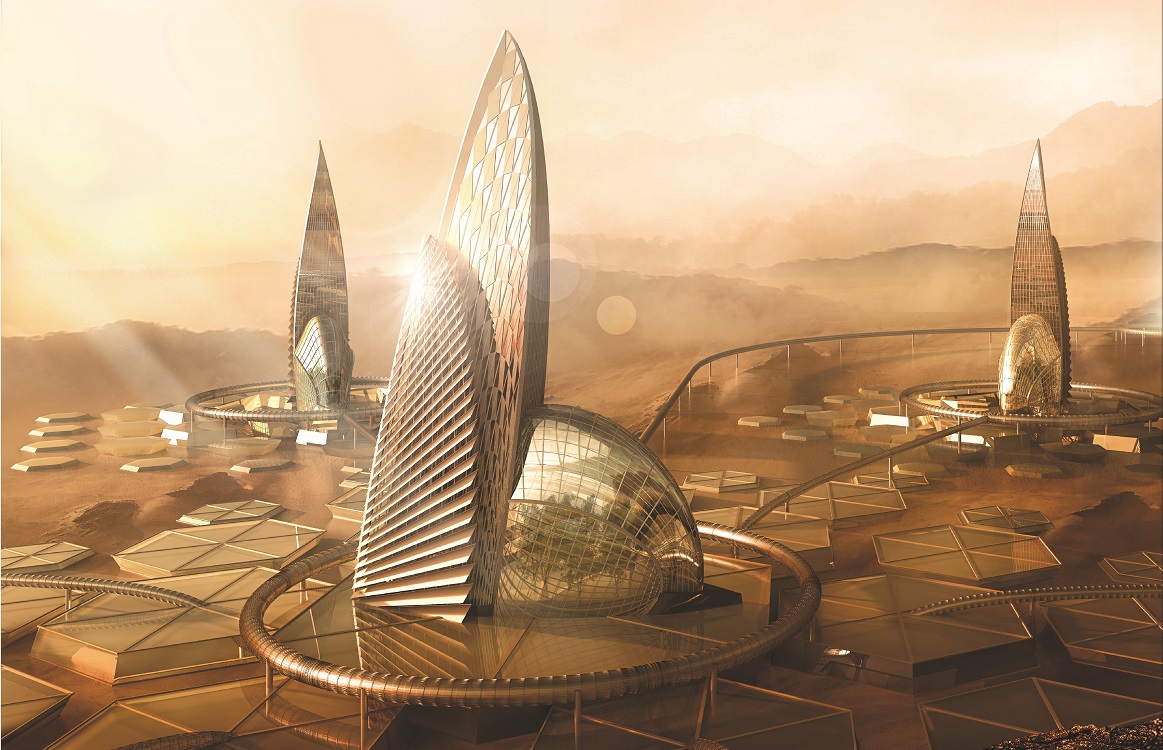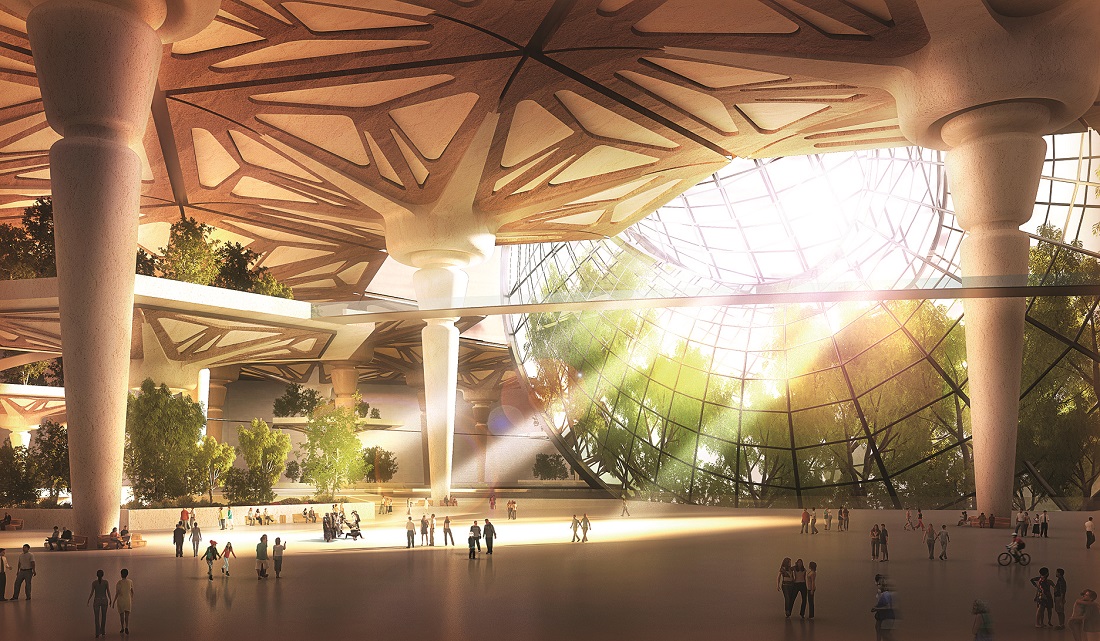
We have watched many science fiction movies inspired by the planet Mars such as The Martian, Interstellar, Red Planet and Mission to Mars and in reality, earthlings are getting themselves closer to making it possible to even live there, one day. After all, space travel is already a thing among those looking for a truly once-in-a-lifetime experience.
Hong Kong-based Ho & Partners Architects Engineers & Development Consultants Ltd (HPA) deputy managing director Nicholas Ho has come up with a vision of the possible future habitat for humans in Mars.
“In the near future, our home planet earth may suffer further decline and shortage of natural resources. With the increase in human population and vast industry pollution output creating tremendous pressure on our environment, earth may no longer sustain human civilisation healthily on its own. We believe we must prepare future generations for such potential trends,” Ho tells EdgeProp.my.
Among all the planets in the galaxy, the red planet would be the most obvious choice as it is similar to earth in terms of its atmosphere, size and gravity. Hence it is one of the most suitable candidates for us to claim as our future potential second home.
“It has been a constant dream to satisfy humanity’s curiosity to explore the stars, and we believe cross-planet and space colonisation is possibly an increasingly significant task for the human race to develop solutions from this century,” says the 31-year-old architect who has worked on a wide range of projects across China, Southeast Asia, the Middle East and Europe.
Multiplanetary travel is not only the preferred theme for sci-fi movies, there are aggressive efforts to realise the idea of space expeditions in the future. Many countries, scientists and environmentalists are exploring the possibility of multiplanetary travel.

In the private sector, technology entrepreneurs have established SpaceX (Space Exploration Technologies) to develop and manufacture advance rockets and spacecrafts that are aimed at enabling humans to become a space-faring civilisation and a multi-planet species by building a self-sustaining city on Mars.
Ho and his team have researched and studied the kind of habitat that is suitable for humans to live on Mars, in preparation for that day when multiplanetary travel becomes a reality.
SEEDs of Mars
It took him two months to complete the Mars habitat project named SEEDs of Mars which went on to receive an honourable mention at the “Marstopia” Design Competition in May 2018 organised by Eleven, an independent architecture, design and creative lifestyle magazine.
Ho stresses that the whole ecosystem of SEEDs of Mars revolves around the efficient utilisation of solar power.
In the design is a tall aerodynamically shaped solar tower that looks like a shell or leaf to enable the tower to receive a large amount of solar energy and create ample space for greenery or other sustainable systems that could benefit from the exposure to the sun.
As Mars receives strong radiation from the sun, prone to sand storms and has a climate with extreme temperature difference, it is best to live within a sheltered structure or underground, says Ho.
“SEEDs of Mars is a long-term visionary proposal that changes Mars. The way we approached creating habitats on Mars was based on a human-centric concept that draws from bio-mimicry.
“It plants impressive 3D printed (solar sinter processed) architectural structures using local abundant materials like sand and stones from Mars’ surface, broken down by concentrated solar rays, thus creating a self-sustaining inner ecosystem that both dwells above and penetrates below ground,” explains Ho.
The low gravity in Mars makes the construction light and easy to build, thus, the 3D printed structure system and prefabricated modular area cells could make the overall structure more sustainable and cost effective.

In terms of energy and power, it’s extremely important to keep the whole system running.
To make this happen, the facility needs an electric battery charge power station which is installed deep down in the lowest floor of the ‘Seed’ to avoid Mars’ hostile environment and other influences that will impact safety.
In conceptualising the idea of SEEDs of Mars, Ho says the biggest challenge in the process was to obtain an accurate knowledge database of Mars which is currently very limited.
“Thus drawing from research must be inspired and fundamentally conceptual.
“Thanks to the fast development of Aerospace Technology, mankind can now easily picture utilising spacecraft for cross-planet transportation using 3D print, prefabrication and robotic drone technologies, hence the issue of living on Mars in the near future is no longer just a dream,” adds Ho.
This story first appeared in the EdgeProp.my pullout on Jan 4, 2019. You can access back issues here.





